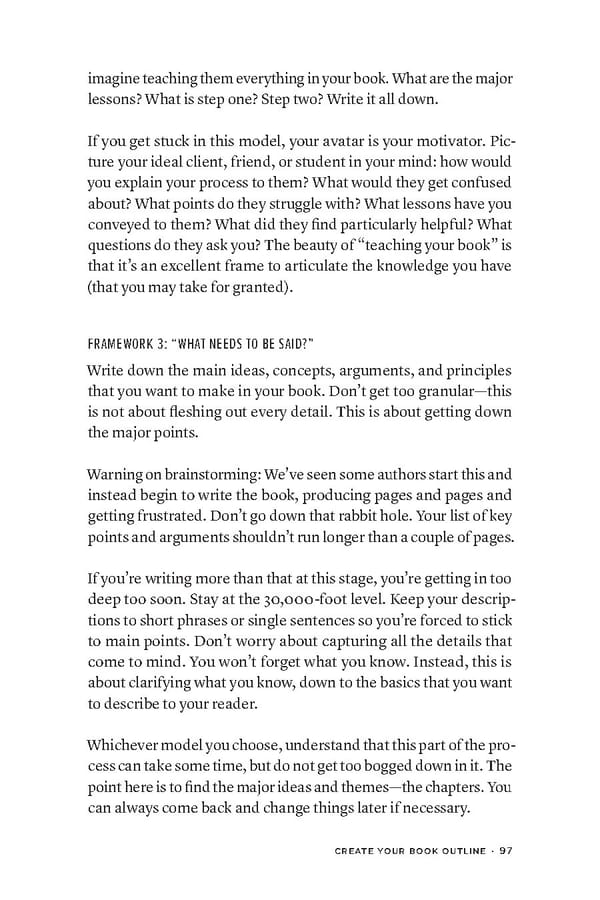imagine teaching them everything in your book. What are the major lessons? What is step one? Step two? Write it all down. If you get stuck in this model, your avatar is your motivator. Pic- ture your ideal client, friend, or student in your mind: how would you explain your process to them? What would they get confused about? What points do they struggle with? What lessons have you conveyed to them? What did they find particularly helpful? What questions do they ask you? The beauty of “teaching your book” is that it’s an excellent frame to articulate the knowledge you have (that you may take for granted). FRAMEWORK 3: “WHAT NEEDS TO BE SAID?” Write down the main ideas, concepts, arguments, and principles that you want to make in your book. Don’t get too granular—this is not about fleshing out every detail. This is about getting down the major points. Warning on brainstorming: We’ve seen some authors start this and instead begin to write the book, producing pages and pages and getting frustrated. Don’t go down that rabbit hole. Your list of key points and arguments shouldn’t run longer than a couple of pages. If you’re writing more than that at this stage, you’re getting in too deep too soon. Stay at the 30,000-foot level. Keep your descrip- tions to short phrases or single sentences so you’re forced to stick to main points. Don’t worry about capturing all the details that come to mind. You won’t forget what you know. Instead, this is about clarifying what you know, down to the basics that you want to describe to your reader. Whichever model you choose, understand that this part of the pro- cess can take some time, but do not get too bogged down in it. The point here is to find the major ideas and themes—the chapters. You can always come back and change things later if necessary. CrEATE yOUr BOOk OUTliNE · 97
 The Scribe Method by Tucker Max Page 96 Page 98
The Scribe Method by Tucker Max Page 96 Page 98